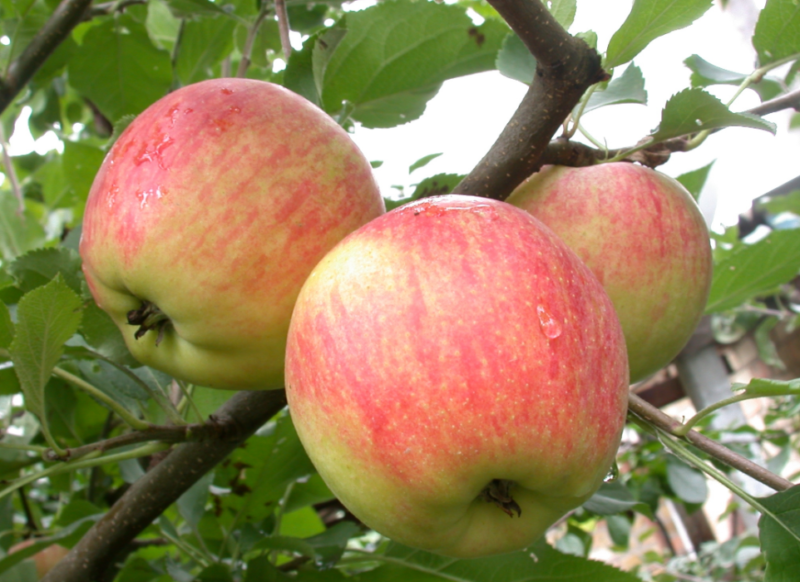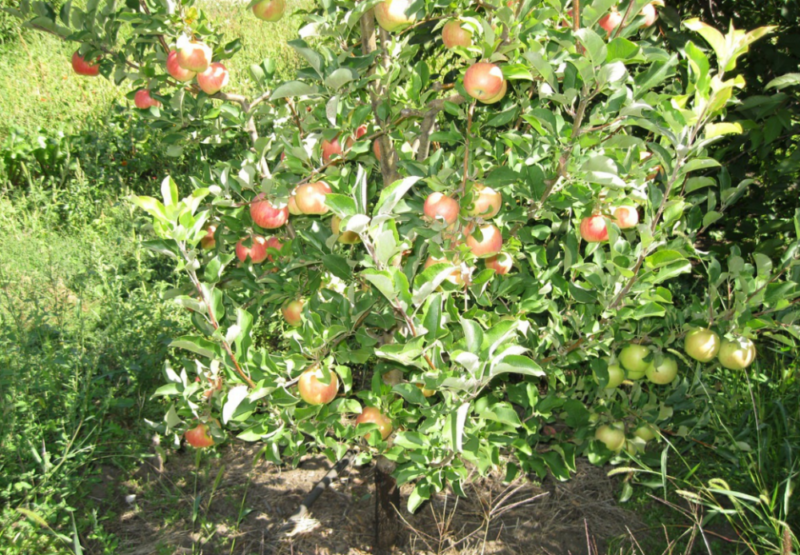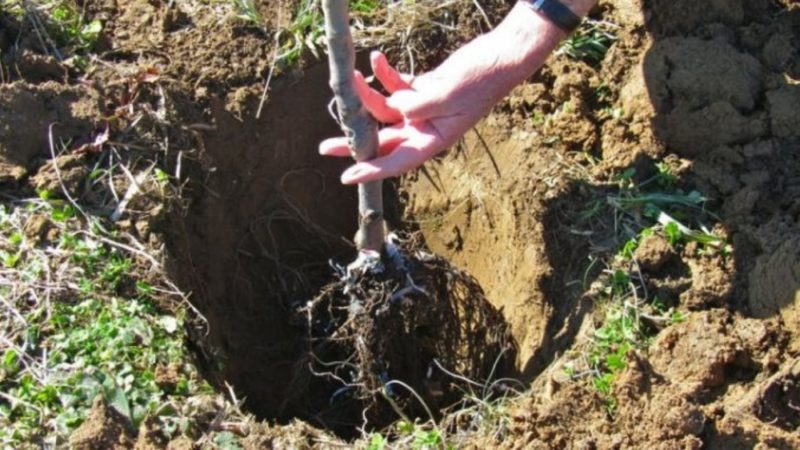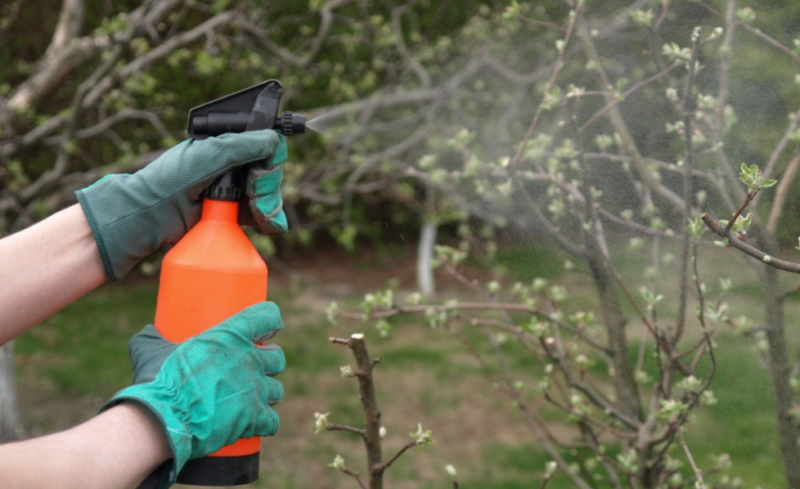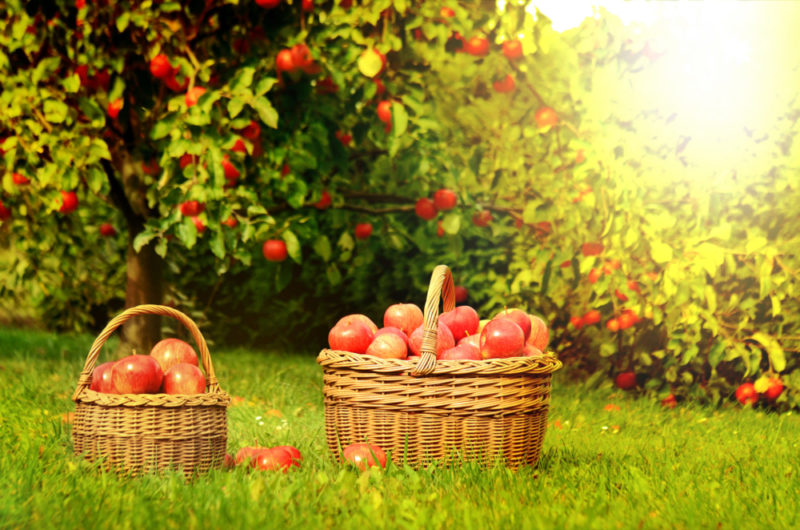Gardeners try to plant as many fruit trees as possible on their plot, and everyone has an apple tree. If there is no such plant yet, then you should definitely think about planting, because you can make a lot of tasty preparations from the fruits, eat fresh, enriching the body with vitamins. We propose to consider the Champion apple tree, which has been spreading confidently around the world for almost 50 years, delighting with high productivity.
Material Content:
The history of breeding apple "Champion"
The birthplace of the hybrid is Czechoslovakia. It was on the territory of this state, in the city of Golovousy, that he was born.
In 1970, scientists managed to get a hybrid from crossing varieties of Renet Orange Cox and Golden Delicious. Consumers appreciated the palatability of a new variety of apples, and it began to be in great demand throughout Europe.
The triumphal work of breeders immediately became a competitor to other popular varieties. Buyers showed interest in the luxurious color of the fruit, and after tasting it, they remained captivated forever.
They tried to repeat the successful hybrid in Poland, and after many years of hard work the relatives of the Champion were born: Champion Renault and Champion Arno.
In Ukraine, gardeners also began to attempt to cultivate an apple tree at home. As it turned out, you can successfully grow a variety in the Carpathian region, in areas of steppe and forest-steppe zones. It is here that growing conditions can be created, close to those familiar at home.
Description and characteristics of the variety
The Champion apple-tree variety captivated gardeners with its compactness, early maturity and high productivity, and the taste of fruits.The tree is picky about care, which is an additional advantage. All these characteristics are not only spelled out in the agrotechnical description of the variety, but also confirmed by hundreds of reviews of people.
Gardeners say that fruiting is stable, every year you can get a good harvest.
The apple tree gives its first delicious fruits in the third year of its life.
The pulp is very fragrant, juicy and sweet. But more about the quality of apples.
Trees do not need to create special conditions for growth, they are resistant to many diseases, including powdery mildew and scab.
The description of the variety is almost perfect, but as always it happens, there is a significant omission of breeders. The apple tree has little resistance to the formation of a bitter dimple; pathogens of a bacterial burn also threaten the crop. But, with timely prevention, all these problems can be solved.
The tree of this variety is stunted, framed by an even rounded crown, has a low thickening of branches, which makes harvesting more convenient. Shoots develop rapidly, but their growth slows down significantly when the fruiting phase begins.
The trunk can be called medium, it is not thick, but not thin. The bark is gray, tender. The kidneys react strongly to changing temperatures, and they are afraid of frost, because they begin to develop with the first warm days. The buds appear in one stream, together, the flowers open the tree in May.
The neighborhood of pollinators is important, without them the variety can self-pollinate, but the fruit forms no more than 30% of the possible.
As for the hybrid Champion Renault, the description is identical. The difference is only in a brighter color and pronounced taste of the fruit.
The height of the tree depends on the stock used. When dwarf was used, the “Champion” will grow to 3 m, if it is medium-tall, then within 5 m.
Productivity with proper care and climate reaches 20 kg or more per tree. The variety begins to give the maximum number of apples from five years. The fruits are large, up to 200 g, have an even rounded shape. The skin is thin, the color is blurry, red, there are white specks.
During the harvest period, apples are greenish-yellow; on one side only, they may have a blush. After lying down a bit, the fruits fully ripen, filled with a sweet and sour taste. The pulp is medium density, juicy and aromatic, has a creamy tint.
The variety does not differ in winter hardiness, since it can survive only a short-term cooling to -18 degrees. Therefore, in regions with severe winters, this hybrid is very difficult to grow.
Champion apples keep freshness for a long time. They are well stored and transported, without losing their taste and attractive appearance. From the fruits, you can make homemade preparations - juice, jam, dried fruits.
Growing Features
Since the Champion columnar apple tree is partially self-pollinated, pollinating trees should be located in close proximity, this will increase the yield to maximum values.
Recommended pollination varieties:
- Lobo
- Idared
- James Mane
- "Teremok";
- Priam
- "Florina."
The key to the successful development of the apple tree is a correctly selected seedling. When buying planting material, pay attention to the integrity of the branch (bark, lateral shoots, buds), the root should not be dry and with signs of disease.
Secrets of acquiring a quality seedling:
- You need to buy only in specialized nurseries.
- Ask the seller to make an incision at the root. If fresh wood is visible, then the specimen is good.
- Choose a seedling within 50 cm, no matter how the seller offers a taller specimen. The grown trees do not take root well, get sick for a long time and grow slowly. So this is a completely disadvantageous offer.
- A good handle should have at least 5 skeletal branches.
If the seedling was purchased in the fall, then remove all leaves from the branches. Process the roots in a mash of water and clay, so they will not dry out.
Dates and rules for outdoor planting
Many beginner gardeners are sure that you can get a good result of growing apples just by choosing the “right” variety. They begin to plant in the usual way (as the neighbor suggested), and this is wrong. Consider the main nuances of planting the Champion apple tree.
You can plant the stalk both in spring and in autumn. This is the best time when the sun's rays are not as aggressive as in the summer, and will not be able to harm young plantings. We will understand the nuances of planting a seedling.
Spring planting should take place in April-May, when the earth warms up enough, frosts pass:
- Soak the root in water for a day, you can add a root.
- After planting and until autumn, a young tree needs to be watered abundantly so that it develops faster.
By winter, the apple tree will grow roots, strengthen the trunk, and it will easily survive the cold.
Autumn planting is carried out in September-October, so that the seedling has several weeks before the onset of cold weather. In such a short time, the apple tree will have time to adapt to a new place, give additional roots.
Before planting in autumn, the roots are first soaked for 24 hours, then they are treated with liquid clay and watered. More watering is not required, natural rainfall will be enough for her.
Experts recommended that cuttings that are under two years old should be planted in spring. And those that are older can be in the fall.
You need to choose the right place for landing. The apple tree does not like the sun, but the shadow harms it. It is necessary to choose a site where the light will be scattered, the absence of drafts and the north wind is also an important detail. An excellent place for an apple tree is a plain or a hill. Water is collected in the lowlands, and the tree will be doomed to permanent fungal diseases.
Apple trees do not tolerate acidified soil; if necessary, it will need to be mixed with lime. The soil should be fertile, light, in the planting zone, the presence of stones and clay is unacceptable.
To prepare the site you need to start long before planting, in about a month.
What is included in the work:
- Dig a hole up to 70 cm deep, 1 m in diameter.
- Divide the soil extracted from the pit into two parts - nutrient (the one on top) and empty (5 spade bayonets deep).
- Put broken brick, crushed stone or expanded clay on the bottom of the hole. This is drainage.
- Mix the fertile soil in equal parts with peat, compost, humus. Lay on top of the created drainage.
In 3-4 weeks, the prepared soil will warm up, fill with the microflora necessary for good rooting.
Landing pattern:
- A day after soaking the roots, they need to be examined again. Detect dry and rotten areas with a pruner, and treat the wounds with coal powder.
- Remove from the pit part of the covered soil, place the root of the tree, spread it.
- Sprinkle, tamp. The root neck should ultimately be 4 cm from the ground.
- Shake the trunk, so you fill the ground with voids, and the tree will stand firmly without a garter. Tamp the ground again.
- Keep a distance of 1.5 m between trees and 4 m between rows.
- Pour the planting, under each tree you need to pour 10 liters of water.
At a distance of 30 cm around the trunk, make a deepening, excess moisture will flow there.
Mulch the soil, but do not use sawdust from conifers, they acidify the soil.
Mulch should be located at a distance of 10-15 cm from the trunk, so pathogenic bacteria from the decomposition of the material will not pass to the tree.
How to take care of the Champion apple tree
With proper care, you will get a good harvest from a healthy and strong tree. The care includes pruning, watering, loosening, weeding, mulching and other procedures, we will talk about each separately.
Watering should be done weekly, but only in the evening. If the weather is too hot, there is no rainfall, then water twice a week. For a large garden, automatic water sprayers are used.
If you have several trees in a small area, then you can cope with this task manually:
- Between the rows, make grooves 12-15 cm deep.
- In the near-stem circle, grooves must also be done, so the water is better absorbed, does not drain.
- Under each tree, add as much water as the soil will take. As soon as puddles begin to form, stop watering.
The last watering should be done 2 weeks before harvesting.
After removing the fruit, you can’t water the apple tree, as this will entail an increase in fresh shoots, which, having not had time to get stronger, will die in the winter.
In spring, fertilizer work begins:
- The first top dressing should be rich in nitrogen, this will allow greens to grow faster. Perfectly diluted in water bird droppings, manure. The procedure is performed twice, the interval is a week.
- The second stage of feeding is done during fruit setting. To do this, you need to make a solution (for 10 liters of water): 1.5 tbsp. l potassium chloride, shovel manure, 150 g of superphosphate, 1 tbsp. l ammonium nitrate, as much nitroammophoski. Watering once.
- The third top dressing - at the end of August, it is needed to increase the winter hardiness of the plant. About this below, in the section on preparations for the winter.
Pruning should be done every spring. Clean dry and diseased shoots, as well as side branches. Do not cut the apple tree strongly, you may lose some of the fruit. Remove only shoots that do not have generative buds. Ideally, the crown should consist of branches that are no more than 4 years old.
To avoid thickening, remove young shoots that cast a shadow on stronger ones. Annual shoots are removed only by those that have not reached 30 cm in length.
After cutting, each branch should receive the same amount of sunlight. Not only the quantity, but also the quality of the fruit depends on this. Those apples that grow in the shade will be smaller, sour, and their color will not turn out as elegant as those that lack the sun.
Weed, loosen stably and mulch the soil near the trunk.
Pest and Disease Treatment
Even the most resistant to diseases and pests plants need to be prevented. Treatment with fungicides (Skor, Delan, Topsin, Poliram) will prevent the development of fungal and bacterial diseases. Spray with these means is necessary during the flowering period. When the buds begin to tie, treat the tree with copper sulfate (50 g of powder must be diluted in 10 liters of water).
You need to fertilize the apple tree with calcium 10 times per season - from May to September. So, you will avoid the bitter dimple.
Apples likes to feast on the moth. But besides it there is still a mass of parasites that are not averse to settle on a fruit tree, slowly and surely destroying it.
The treatment with soap and water, ash and ash will help.
Of the means for prevention and control, the following have proven themselves excellently:
- “On the spot”;
- Karbofos;
- Fastak
- "Calypso";
- "Decis";
- Kemifos.
Use these drugs according to the prescribed instructions.
Harvesting and storage
Harvest must be in the first half of September. The ripening of apples has not yet been completed, but their longer presence on the tree will lead to the fact that taste qualities disappear and the harvest will be less. In just a week, the fruits will taste good and you can eat them.
Do not store apples in the vicinity of other fruits and vegetables.
The fact is that fruits emit special substances that affect rapid ripening. As a result, nearby vegetables will frown, potatoes will sprout, and the apples themselves will become flabby.
Champion fruit can be stored for 6-8 months in the refrigerator or underfloor.
Preparing the apple tree for winter
Prepare the tree for wintering begin in the second half of August. It is necessary to produce a single top dressing with mineral fertilizers, ask the seller for the autumn. Extra root top dressing with superphosphate will also help survive the winter (50 grams of substance is needed per 1 liter of liquid).
Young trees, which are not yet five years old, are especially in need of winter shelter. With the onset of cold weather, mulch the soil with a thicker layer.Ideally, spread hay or spruce paws. Wrap the root part of the tree in a dense fabric, tie it up so that the wind does not blow off and open. If the climate is not too harsh, then an adult tree does not need to be covered.
Observing the prescribed recommendations, you will grow a healthy tree, the fruiting of which will delight for many years. Homemade apples are a benefit for the whole family, the pride of the gardener. Good luck growing!


